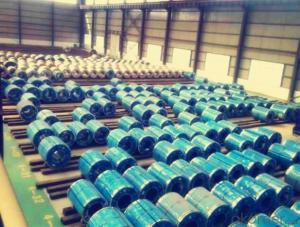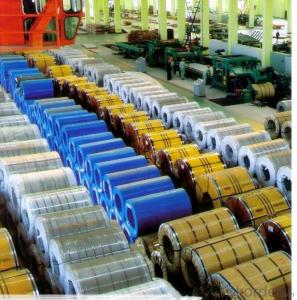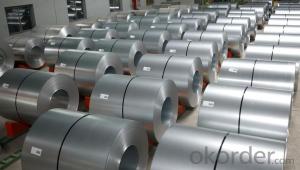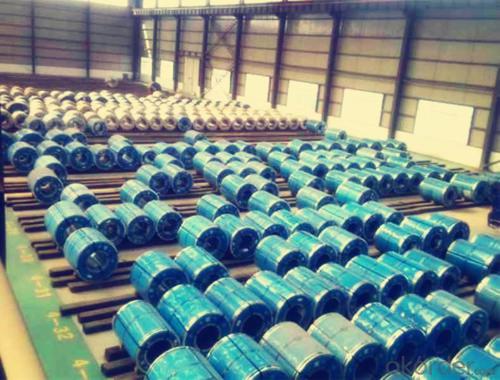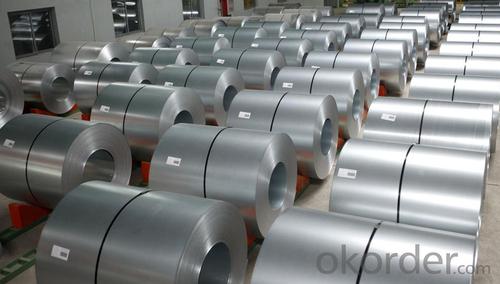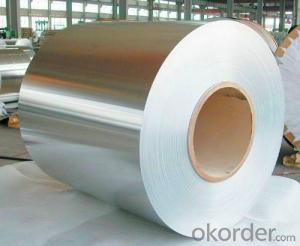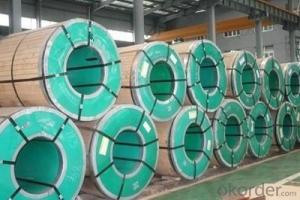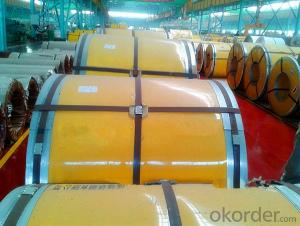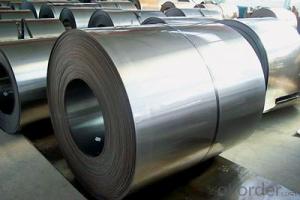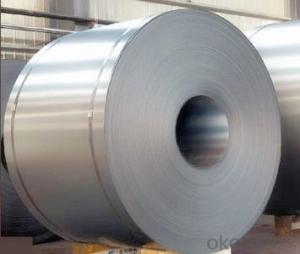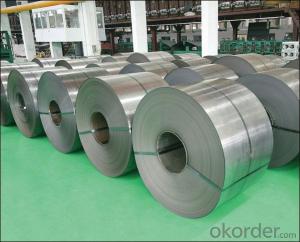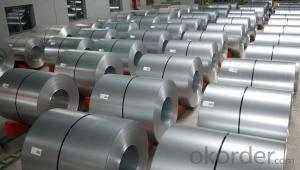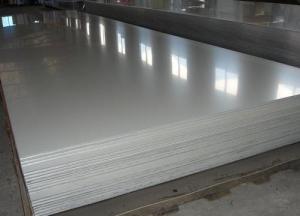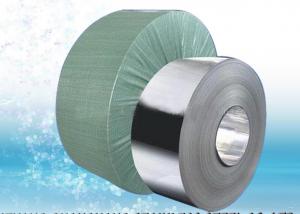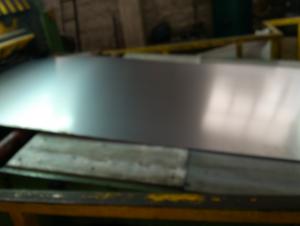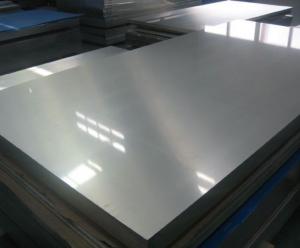Stainless Steel Coil Cold Rolled 201 Surface L1 with Best Quality
- Loading Port:
- China main port
- Payment Terms:
- TT OR LC
- Min Order Qty:
- 100 m.t.
- Supply Capability:
- 20000 m.t./month
OKorder Service Pledge
OKorder Financial Service
You Might Also Like
1. Structure of Stainless Steel Coil Cold Rolled 201 Descriptions
Stainless Steel 201 is a new kind of Austenite stainless steel by used Mn, N replace Ni. The steel has good corrosion resistance and hot / cold processing performance, instead of 304 stainless steel products for used in the not high of corrosive environment, such as indoor, inland city outdoor etc.
2. Main Features of the Stainless Steel Coil Cold Rolled 201
Product name: Stainless Steel Coil Cold Rolled 201
Thickness: 0.2mm to 1.5mm
Technical: Cold Rolled
Width: 10mm to 1240mm
Type: 200 Series
Length: As customer's requested
Standard: JIS, SUS, AISI, ASTM
Grade: 201-J1, 201-J4, AISI201, AISI202…
Finish: BA, 2B, 8K, NO.3, NO.4, HL…
MOQ: 25 Metric Tons
Hardness: Low Hard(190 HV Max); Half Hard(240-280HV); Full Hard(42-60 HRC)
Ship Term: FOB any port, China or CFR Destination port
Delivery Time: 15 to 20 day after the receive the deposit or 100%LC
Payment Terms: TT 30% for deposit, Balance against the copy of B/L, or 100%LC
Packaging: By wooden pallet, wooden case or according to customer's request
3. Stainless Steel Coil Cold Rolled 201 Images
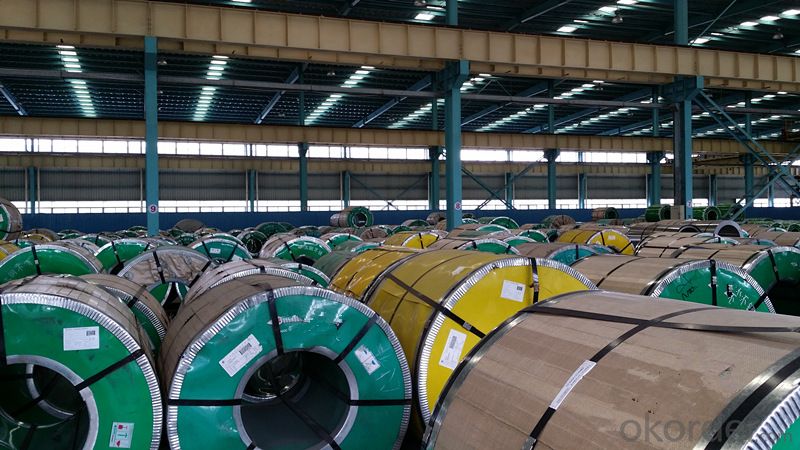
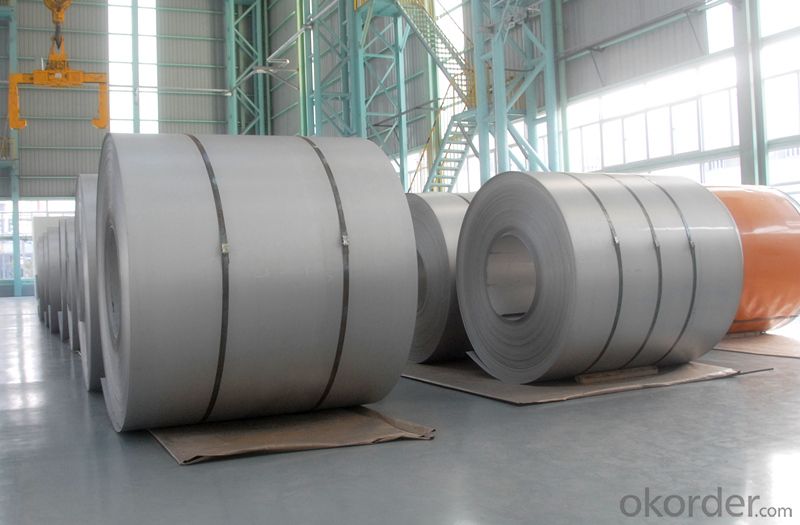
4. Stainless Steel Coil Cold Rolled 201 Specifications
Mechanical Property Contrast | YS (Mpa) | TS (Mpa) | EL(%) | HV | REMARK |
Stainless Steel 201 | 426 | 880 | 52 | 224 | 1.0t |
Stainless Steel 304 | 285 | 710 | 58 | 165 | 1.0t |
Stainless Steel 200 Series Chemicals Contrast (wt. %) | ||||||||
Chemicals | C | Si | Mn | Cr | Ni | N | Other | |
205 | 0.12-0.25 | ≤0.75 | 14.0-15.0 | 16.5-18.0 | 1.0-1.75 | 0.32-0.4 | ||
JIS, | 201 | ≤0.15 | ≤1.0 | 5.5-7.5 | 16.0-18.0 | 3.5-5.5 | ≤0.25 | - |
201L | ≤0.03 | ≤0.75 | 5.5-7.5 | 16.0-18.0 | 3.5-5.5 | ≤0.25 | - | |
202 | ≤0.15 | ≤1.0 | 7.5-10.0 | 17.0-19.0 | 4.0-6.0 | ≤0.25 | - | |
201LN | ≤0.03 | ≤0.75 | 6.4-7.5 | 16.0-17.5 | 4.0-5.5 | 0.1-0.25 | Cu≤1.0 | |
India | 201-J1 | ≤0.08 | ≤0.75 | 7.0-8.0 | 15.0-17.0 | 4.0-5.0 | ≤0.1 | Cu≤1.5 |
201-J3 | ≤0.08 | ≤0.75 | 9.0-10.5 | 14.0-16.0 | 2.0-3.0 | ≤0.15 | Cu≤2.0 | |
201-J4 | ≤0.10 | ≤0.75 | 8.5-10.0 | 15.0-16.0 | ≤1.2 | ≤0.2 | Cu≤2.0 | |
America | 204 | ≤0.03 | ≤1.0 | 7.0-9.0 | 15.0-17.0 | 1.5-3.0 | 0.15-0.3 | (Cu) |
H400 | ≤0.10 | ≤1.0 | 6.0-9.0 | 17.0-19.5 | ≤3.5 | ≤0.3 | - | |
Japan | YUS130S | 0.09 | 0.5 | 11.0 | 18.0 | 6.5 | 0.35 | - |
NTK S-4 | 0.17 | 0.43 | 14.7 | 17.7 | 1.3 | 0.35 | - | |
NM15M | 0.08 | 0.8 | 14.5 | 17.0 | 4.3 | 0.33 | - | |
Europe America | 219 | ≤0.04 | ≤0.75 | 8.0-10.0 | 19.0-21.5 | 5.5-7.5 | 0.15-0.4 | - |
Cromanite | ≤0.08 | ≤1.0 | 9.5-11.0 | 18.0-20.0 | ≤1.0 | 0.4-0.6 | - | |
201 Surface | Characteristic and Application of Stainless Steel Coil Cold Rolled 201 |
2B | The surface brightness and flatness of 2B is better than 2D then through a special surface treatment to improve its mechanical properties,2B could nearly Satisfy comprehensive uses |
No.4 | Polished with abrasive belt of grit#150#180, have better brightness with discontinuous coarse stria, but thinner than NO.3, are used as bathtub buildings inner and electrical appliances kitchen utensils and food processing. |
BA | Cold rolled, bright annealed and skin-passed, the product have excellent brightness like mirror kitchen apparatus, etc. |
8K | The product have excellent brightness and prefer bright can be the mirror. |
5. FAQ of Stainless Steel Coil Cold Rolled 201
Q: Are you factory or trader?
A: We certainly are stainless steel manufacturer and have processing plant.
Q: Can you provide mill test certificate?
A: Yes! Mill test certificate for both hot rolled raw material coils and cold rolled coils are available.
Q: How to get a sample?
A: Free samples are available for your checking and testing. And to get free samples, please send us your detailed receiving address (including post code) and your DHL/FEDEX/UPS account for collecting samples, courier cost will be paid in your side.
Q: How to visit your factory?
A: Most of the main cities in the world have flight to Beijing; you can take flight to Beijing first, then we will lead you to our Wuxi mills.
Q: How about your company?
A world class manufacturer & supplier of castings forging in stainless steel, is one of the large-scale professional investment casting production bases in China, consisting of both casting foundry forging and machining factory. Annually more than 90000 tons Precision casting and forging parts are exported to markets in Europe, America and Japan. OEM casting and forging service are available, all according to customer’s requirements.
Q: How to guarantee the quality of the products?
A: We have established the international advanced quality management system,every link from raw material to final product we have strict quality test; We resolutely put an end to unqualified products flowing into the market. At the same time, we will provide necessary follow-up service assurance.
Q: How is the packaging and delivery?
A: Standard export packing (Coil: waterproof paper + protective steel ring; Circle: wooden box), or as your requirement and the delivery term is based on the project.
- Q: Are stainless steel strips suitable for conveyor belts?
- Yes, stainless steel strips are highly suitable for conveyor belts due to their durability, heat and corrosion resistance, and high strength-to-weight ratio. They can withstand heavy loads, extreme temperatures, and harsh environments, making them an excellent choice for various industries that require reliable and long-lasting conveyor systems.
- Q: Can stainless steel strips be used in oil and gas industries?
- Yes, stainless steel strips can be used in oil and gas industries. Stainless steel is highly resistant to corrosion, making it an ideal material for various applications in these industries. It is commonly used for constructing pipelines, storage tanks, and other equipment that come into contact with oil and gas. Its durability and ability to withstand high temperatures and pressure make stainless steel strips a reliable choice in these demanding environments.
- Q: Are stainless steel strips resistant to abrasion and wear?
- Stainless steel strips, in general, possess resistance to abrasion and wear. Their durability and strength are well-known characteristics that make them highly resistant to damage from friction and contact with other surfaces. This resistance can be attributed to the unique properties of stainless steel, including its high corrosion resistance, hardness, and toughness. Consequently, stainless steel strips are suitable for a wide range of applications that involve exposure to abrasive environments or high levels of wear, such as in the automotive, construction, and industrial sectors. Nevertheless, the degree of resistance to abrasion and wear may vary depending on the specific grade and surface finish of the stainless steel strip, as well as the type of abrasives or wear mechanisms involved. To ensure the appropriate selection and use of stainless steel strips for particular applications, it is advisable to consult the manufacturer's specifications and guidelines.
- Q: How do stainless steel strips resist erosion?
- Due to its unique composition and properties, stainless steel strips possess the capacity to withstand erosion. Primarily, stainless steel is an alloy containing a high chromium content, resulting in a protective layer of chromium oxide forming on its surface. This layer acts as a barrier, preventing oxygen and moisture from reaching the underlying metal, thus safeguarding it against corrosion and erosion. Furthermore, stainless steel strips exhibit exceptional resistance to acids, alkalis, and various chemicals, making them suitable for usage in harsh environments. The presence of other alloying elements like nickel and molybdenum further enhances the corrosion resistance of stainless steel. Moreover, the structure of stainless steel, especially austenitic stainless steel, provides excellent strength and toughness, enhancing its resistance against mechanical erosion. The combination of corrosion resistance and mechanical properties enables stainless steel strips to endure erosive forces and exhibit high durability. Additionally, various surface finishes such as passivation or electro-polishing can be applied to stainless steel strips, further bolstering their resistance to erosion. These treatments eliminate impurities and contaminants from the surface, resulting in a smoother and more corrosion-resistant finish. In conclusion, the ability of stainless steel strips to resist erosion stems from their corrosion-resistant composition, surface treatments, and outstanding mechanical properties. These attributes render stainless steel an ideal material for numerous applications where erosion resistance is critical, such as the production of automotive components, kitchen appliances, and chemical processing equipment.
- Q: How do stainless steel strips handle exposure to solvents?
- Stainless steel strips generally have good resistance to solvents, as they are highly corrosion resistant and do not easily react with most chemicals. Thus, they can handle exposure to solvents effectively without significant degradation or damage.
- Q: Can 111 stainless steel strips be hardened through heat treatment?
- Yes, 111 stainless steel strips can be hardened through heat treatment.
- Q: What are the common applications of stainless steel strips?
- Stainless steel strips have a wide range of applications due to their various beneficial properties. Here are some common applications of stainless steel strips: 1. Construction: Stainless steel strips are commonly used in the construction industry for various purposes. They are extensively used in structural components, roofing, cladding, and architectural features due to their corrosion resistance, durability, and aesthetic appeal. 2. Automotive industry: Stainless steel strips find applications in the automotive industry for manufacturing components like exhaust systems, trim, grills, and fuel tanks. They are preferred for their resistance to heat, corrosion, and impact, ensuring longevity and safety in vehicles. 3. Kitchen appliances: Stainless steel strips are widely used in the production of kitchen appliances such as countertops, sinks, cookware, and utensils. Their corrosion resistance, easy cleaning, and hygienic properties make them a popular choice for the food industry. 4. Medical equipment: Stainless steel strips are extensively used in the manufacturing of medical instruments and equipment. They are preferred for their biocompatibility, non-reactive nature, and resistance to sterilization methods, making them suitable for surgical tools, implants, and medical devices. 5. Electronics: Stainless steel strips are used in the electronics industry for various applications such as connectors, terminals, springs, and shielding. Their electrical conductivity, durability, and resistance to corrosion make them ideal for these applications. 6. Oil and gas industry: Stainless steel strips are commonly used in the oil and gas industry for manufacturing pipes, tanks, valves, and other equipment. Their resistance to corrosion and high temperatures make them suitable for harsh environments and ensure the integrity of equipment. 7. Aerospace industry: Stainless steel strips find applications in the aerospace industry for manufacturing aircraft components, including structural parts, fasteners, and fittings. Their high strength-to-weight ratio, resistance to extreme temperatures, and corrosion resistance contribute to the safety and performance of aircraft. 8. Decorative and architectural purposes: Stainless steel strips are used for decorative purposes in architecture and interior design. They can be shaped, polished, and finished to create attractive and durable features like handrails, elevator panels, signage, and sculptures. These are just a few examples of the common applications of stainless steel strips. With their versatile properties, they are utilized in various industries where strength, corrosion resistance, hygiene, and aesthetics are essential.
- Q: Are 111 stainless steel strips suitable for wastewater treatment plants?
- Yes, 111 stainless steel strips are suitable for wastewater treatment plants. Stainless steel is highly resistant to corrosion, which makes it an ideal material for environments with high moisture and chemical exposure like wastewater treatment plants. Additionally, 111 stainless steel strips offer good strength and durability, ensuring they can withstand the harsh conditions and demands of wastewater treatment processes.
- Q: How do stainless steel strips perform in high-temperature steam?
- Stainless steel strips perform exceptionally well in high-temperature steam due to their excellent resistance to corrosion and oxidation. They exhibit high strength, durability, and stability even under extreme heat and pressure conditions, making them suitable for various applications in steam-based industries such as power generation, chemical processing, and food production.
- Q: Can 111 stainless steel strips be perforated for filtration applications?
- Indeed, it is possible to perforate 111 stainless steel strips for filtration purposes. Perforation of stainless steel strips enables the formation of delicate apertures or slits, which are crucial for filtration objectives. The dimensions and configuration of the perforations can be tailored to meet specific filtration criteria. Stainless steel is frequently favored for filtration applications owing to its robustness, resistance to corrosion, and capacity to endure elevated temperatures. Consequently, employing 111 stainless steel strips for perforation can present an efficient remedy for diverse filtration demands.
Send your message to us
Stainless Steel Coil Cold Rolled 201 Surface L1 with Best Quality
- Loading Port:
- China main port
- Payment Terms:
- TT OR LC
- Min Order Qty:
- 100 m.t.
- Supply Capability:
- 20000 m.t./month
OKorder Service Pledge
OKorder Financial Service
Similar products
Hot products
Hot Searches
Related keywords
